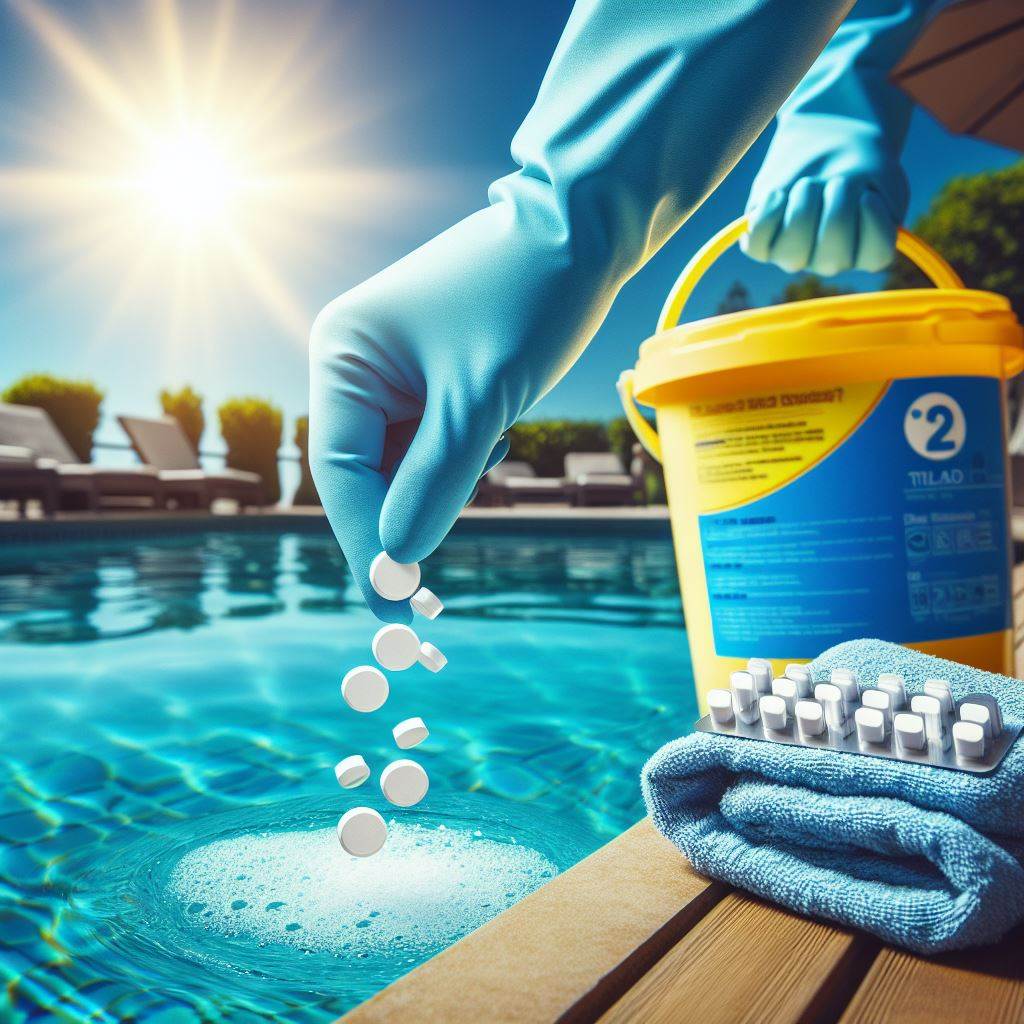In the realm of pool maintenance, chlorine tablets stand as a cornerstone in ensuring crystal-clear waters and a hygienic swimming environment. Beyond their ubiquitous presence, however, lies a complex interplay of scientific principles and environmental factors that make these tablets a vital yet nuanced tool in pool management. This blog delves into the science behind chlorine tablets, discussing their mechanisms of action, while also examining the environmental considerations that inform their responsible use.

I. The Science Behind Chlorine Tablets: A Disinfecting Marvel
1. The Chlorine Element and Its Antimicrobial Properties
Chlorine, a halogen element, has long been recognized for its potent antimicrobial properties. When dissolved in water, chlorine forms hypochlorous acid (HOCl), a highly reactive compound that disrupts the cell walls of bacteria, viruses, and algae, effectively neutralizing them. Chlorine tablets harness this natural power, slowly releasing chlorine into the pool water, creating a continuous barrier against contaminants.
2. Slow-Release Technology: A Balancing Act
One of the key advantages of chlorine tablets is their slow-release mechanism. This technology ensures a steady supply of chlorine over an extended period, avoiding sudden spikes in chlorine levels that can irritate swimmers’ skin and eyes. By maintaining a consistent level of disinfection, slow-release tablets help keep the pool water safe and comfortable for all users.
3. PH and Chlorine Effectiveness
The effectiveness of chlorine in pools is intricately linked to the water’s pH level. An optimal pH range (usually between 7.2 and 7.8) ensures that chlorine is in its most active form (HOCl) and can efficiently perform its disinfecting duties. Chlorine tablets often contain buffering agents that help stabilize pH levels, further enhancing their overall effectiveness.
II. Environmental Considerations: Balancing Hygiene with Sustainability
1. Minimizing Chemical Waste
While chlorine is essential for pool sanitation, excessive use can lead to environmental concerns. Responsible pool owners and operators strive to minimize chemical waste by using only the necessary amount of chlorine tablets and regularly testing water quality to adjust dosages accordingly. This not only ensures a safe swimming environment but also reduces the risk of harmful chemical runoff into surrounding ecosystems.
2. Eco-Friendly Chlorine Alternatives
In recent years, eco-friendly chlorine alternatives have emerged as viable options for pool owners looking to reduce their environmental footprint. These alternatives, such as mineral purifiers and saltwater chlorination systems, utilize natural processes to generate chlorine-like compounds for disinfection. While they may require different maintenance protocols, these systems offer an attractive alternative for those concerned about the long-term impact of traditional chlorine use.
3. Water Conservation and Recirculation
Effective pool management also involves water conservation measures. By ensuring that the pool’s filtration and recirculation system is operating efficiently, pool owners can minimize water loss through evaporation and backwashing. This not only saves water but also reduces the need for frequent chlorine additions, further supporting environmental sustainability.

III. Best Practices for Responsible Chlorine Tablet Use
1. Regular Water Testing
Regular testing of pool water for chlorine levels, pH, and alkalinity is crucial for responsible chlorine tablet use. This allows pool owners to adjust their maintenance routines based on actual water conditions, ensuring that chlorine levels are neither too high nor too low.
2. Proper Storage and Handling
Chlorine tablets should be stored in a cool, dry place away from direct sunlight and flammable materials. When handling tablets, users should wear protective gloves and avoid skin contact to prevent irritation. Proper storage and handling not only ensure the safety of those who use the pool but also prevent accidental spills or releases that could harm the environment.
3. Education and Awareness
Raising awareness among pool users about the importance of proper pool maintenance and responsible chlorine use is essential. By educating swimmers about the potential impacts of excessive chemical use and encouraging them to adopt eco-friendly practices, we can collectively work towards creating safer, more sustainable swimming environments.
Conclusion
Chlorine tablets play a pivotal role in maintaining the cleanliness and hygiene of pools worldwide. Their scientific principles, rooted in the powerful disinfecting properties of chlorine, enable them to effectively neutralize contaminants and keep pool water safe for all. However, responsible use of these tablets necessitates a balanced approach that considers both hygiene and environmental sustainability. By adopting best practices, such as regular water testing, proper storage and handling, and education and awareness, pool owners and operators can ensure that their pools remain sparkling clean while minimizing their environmental impact.

 Instant
Quote
Instant
Quote Email
Us
Email
Us